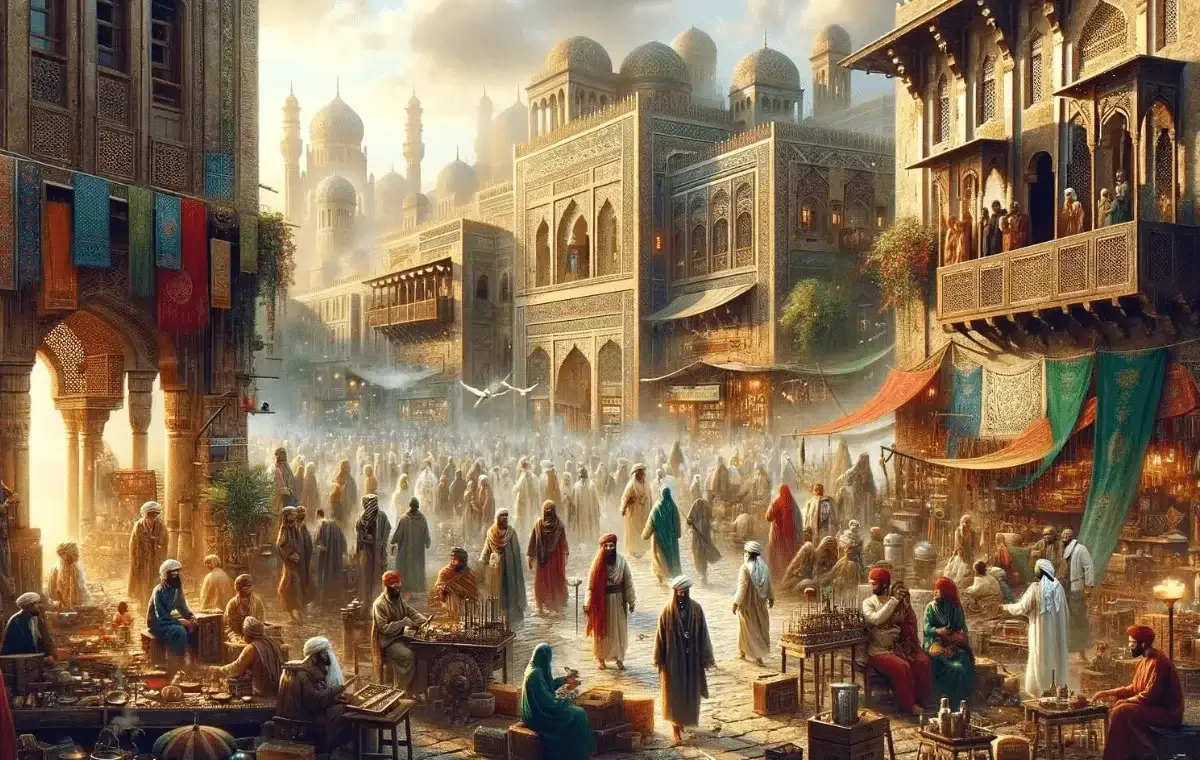
Welcome to a deep dive into the intriguing world of Masqlaseen – an ancient and enigmatic cultural practice shrouded in mystery. In this blog post, we will explore the rich history and cultural significance of Masqlaseen, shedding light on its origins, traditions, and rituals that have been pass down through generations. Join us on a journey to uncover the secrets and beauty of this fascinating tradition!
Introduction: The power of masqlaseen and its impact on culture
Masqlaseen, also known as the “dance of swords,” is a traditional folk dance originating from the Arab world. It has been passed down for generations, weaving through various cultures and countries, making a lasting impact on each one it touches. Masqlaseen may seem like just a simple dance to an outsider, but it holds deep cultural significance that reflects the history and traditions of the people who have embraced it.
The word “masqlaseen” itself comes from two Arabic words – masq which means sword and las which translates to lace or chain. This unique combination of words paints a picture of how intertwined and connected this dance is with weaponry and assertiveness, both major elements in Arab culture.
What is Masqlaseen?
Masqlaseen is a term that may be unfamiliar to many, but it holds great historical and cultural significance in the Middle East. In this section, we will delve into the origins of Masqlaseen and its meaning, as well as its role in various aspects of society.
Firstly, let us start with the meaning of Masqlaseen. The word itself comes from the Arabic root word “silsilah”, which means chain or connection. The prefix “ma” signifies plural, so Masqlaseen can be translate to mean multiple connections or chains. This definition already provides insight into the cultural importance placed on connections among people in Arab societies.
The concept of Masqlaseen traces back to ancient times when tribes were the primary social unit in Arabia. Each tribe had its own traditions, beliefs, and way of life that distinguished them from others. However, despite these differences, there was an understanding that they all belonged to one larger community bound by shared customs and values.
Origins and meaning of the word
The word “Masqlaseen” may seem unfamiliar to many, but it holds a rich history and cultural significance for the people of Saudi Arabia. The word is derived from the Arabic root “masqala,” meaning to sieve or sift, and has deep ties to Bedouin culture, traditional handicrafts, and rituals in this region.
Originating from the Arabian desert, the Bedouins were nomadic tribes who relied on camel herding, trade routes, and oasis settlements for survival. As they traveled through harsh terrains, they used
sieves made of woven palm leaves called “masaqil” to filter sand from grains or pebbles from flour. The act of sifting was essential for preserving food supplies and maintaining purity in religious rites.
Different variations and interpretations across cultures
The traditional dance form of Masqlaseen has a rich history that spans across various cultures and regions. As with any cultural art, it has evolved over time and taken on different variations and interpretations in different parts of the world. In this section, we will explore how this dance has been adapt and embraced by various cultures, showcasing its diverse representations.
One of the earliest versions of Masqlaseen can be trace back to ancient Egypt, where it was performe as part of ritualistic ceremonies. It was use as a form of celebration during harvest festivals and religious occasions. The movements were regard as sacre and symbolized the connection between humans and nature. This interpretation is still prevalent among some indigenous communities in Egypt today.
Historical Significance of Masqlaseen:
The region of Masqlaseen has a long and complex history, dating back thousands of years. Its location at the crossroads of different empires and civilizations has shaped its unique cultural identity and traditions. In this section, we will delve into the historical significance of Masqlaseen, from ancient times to modern-day.
Ancient History:
The earliest known civilization in Masqlaseen was the Scythians, nomadic tribes that occupied the area around 700 BC. They were skilled horse riders and fierce warriors who left a lasting impact on the region’s culture. The Scythians were eventually overthrown by the Achaemenid Empire in 512 BC, followed by Alexander the Great’s conquest in 329 BC.
Islamic Influence:
In the 7th century AD, Muslim Arab armies invaded Masqlaseen and brought Islam to the region. The Umayyad Caliphate established their capital in Damascus but ruled over Masqlaseen from various regional centers. This Islamic presence further enriched Masqalseen’s culture with art, poetry, architecture, and literature.
Originating from ancient civilizations
The origins of Masqlaseen can be trace back to the ancient civilizations of Mesopotamia and Egypt. Where it was initially use as a form of communication and expression. This ancient art form has been passed down for centuries through various cultures. And has evolved into the beautiful and intricate dance that we know today.
Mesopotamia, known as the “cradle of civilization,” was home to some of the earliest forms of human culture. It is believe that Masqlaseen was first practiced in this region around 3000 BCE, primarily by
priestesses who used it as a ritualistic dance to honor their deities. These early dancers were highly skill and were rever for their ability to connect with the spiritual realm through their movements.
As Mesopotamian civilization expanded, so did the popularity of Masqlaseen. It spread throughout neighboring regions such as Persia, Greece, and India, each adding their unique touches to the dance style. In Persia, Masqlaseen became a symbol of love and romance and was often performe at weddings or other celebratory events.
Evolution over time
The Masqlaseen people have a rich history that spans over centuries, and their culture has evolved significantly over time. From their origins in ancient Arabia to the present day. The Masqlaseen have undergone various transformations, influenced by factors such as trade, migration, and political changes.
Origins and Migration
The origins of the Masqlaseen are believed to be in ancient Arabia. They were a nomadic people who lived off of livestock herding and trade along established caravan routes. With their strategic location between Africa and Asia, they were expose to different cultures. And ideas that shaped their beliefs and practices.
Influence of Islam
One of the most significant developments in the cultural evolution of the Masqlaseen was the introduction of Islam. In 630 AD, Prophet Muhammad sent a envoy to Oman to spread the teachings of
Islam. This led to widespread conversion among the Masqlaseen, shaping their religious beliefs and practices ever since.
Arabian Influence
As Arab traders traveled through Africa on camel caravans during medieval times, they brought with them not only goods for trading but also new customs and traditions. Over time, these influences merged with local beliefs to form a unique blend that is characteristic of Masqlaseen culture today.
Colonialism
The arrival of European colonial powers greatly impacted the traditional ways of life for many indigenous peoples around the world, including the Masqlaseen. The Portuguese were one of the first colonizers who established trading posts in Oman in the early 16th century. Later on, British rule had a significant influence on modernizing government systems and education among other aspects.
Modern Era
In recent years, globalization has brought about even more significant changes within Masqlaseen society. The discovery of oil reserves in Oman has resulted in an influx of foreign workers from different parts of the world seeking employment opportunities. This influx has led to increased diversity within communities as well as the adoption of more modern lifestyles.
Cultural Significance of Masqlaseen:
The Masqlaseen tribe, also known as the Al-Masikliyyah or Musalikliyeh, has a rich cultural heritage that dates back centuries. The name “Masqlaseen” is derived from the Arabic word “maslak”, which means “way” or “path”, and refers to the tribe’s migratory lifestyle. It is believe that the Masqlaseen originated from central Arabia and eventually settled in their current location in southern Iraq.
One of the major components of the Masqlaseen culture is their traditional nomadic way of life. Historically, they were known for their expert horsemanship and camel-riding skills, which allowed them to travel long distances across harsh desert landscapes. This lifestyle not only contributed to their survival but also shaped their identity as a resilient and self-sufficient people.
How it is deeply embedded in
The Masqlaseen culture is deeply embed in every aspect of life, from birth to death. It is a way of life that has been pass down through generations, with each member of the community playing an important role in preserving and continuing its traditions.
At the heart of the Masqlaseen culture lies their strong family values and sense of community. The family unit is consider the foundation of society, and it is highly value and respect. This can be seen in their close-knit extend families where multiple generations live under one roof or in close proximity to each other. The elders are highly rever and play a central role in decision-making and passing down cultural practices to younger members.
Their religious beliefs also heavily influence their way of life. The majority of Masqlaseen people practice Islam, which plays a significant role in shaping their customs and traditions. Prayer times dictate daily routines, with many businesses closing during prayer times to allow for individuals to fulfill their religious obligations. Friday prayers are a communal event where everyone comes together at the local mosque to worship and share meals afterward.






